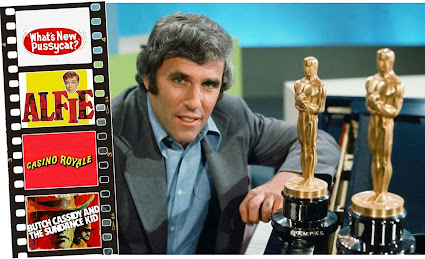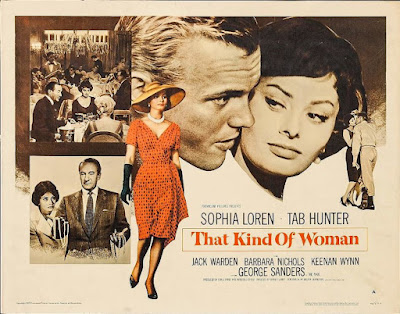I've always been a huge fan of those Annette Funicello / Frankie Avalon Beach Party movies. As a staple of Saturday afternoon TV growing up, I looked forward to them for their terrific music, minimal clothing, rhythm-challenged dancers, and engagingly silly plotlines. Essentially live-action cartoons, these lowbrow, low-budget musical comedies were a great deal of mindless fun enlivened by a knowing, slapstick playfulness and an utter lack of pretension.
Funnier and far more clever than they tend to get credit for, those Annette & Frankie films appealed to me because they always seemed to be in on the joke. Loaded with satirical pop culture references and characters who broke the 4th wall to address the audience, the scripts for these movies knew that they were just soggy, song-filled teen nonsense and seldom passed up an opportunity to poke fun at themselves.
Plus, for a budding cinephile like me, the bonus was having folks like Yvonne De Carlo, Buster Keaton, Elsa Lanchester, Dorothy Malone, Mickey Rooney, and Timothy Carey turn up in minor roles.
Even as a kid (which wouldn't have been more than a few years after these films were made), I knew that the stiff-haired, clean-cut, parent-free, all-white world of sun, sand, and surfboards these movies took place in was wholly untethered to anything resembling a recognizable reality. (Indeed, the entire Beach Party series borders on absurdist.) But as far as I was concerned, the patent artificiality of it all was just another part of what made these charmingly corny movies so endearing.
 |
| "Are we the corniest couple you've ever seen, or what?|" |
In their solo movie appearances, preternaturally boyish Frankie Avalon and eternal girl-next-door Annette Funicello were charismatic as all get-out, but neither had me reaching for my dark glasses to shield me from their megawatt star quality. Annette, whom I've been in love with since her Mickey Mouse Club days, always seemed to level off at "favorite middle-school teacher in a pageant" appealing competency, while Frankie, as a solo screen presence, tended to give facetious, all-surface performances that oozed a vaguely smarmy vibe.
But together, they were beach blanket magic.
There's an oft-repeated quote attributed to Katharine Hepburn relating to the onscreen chemistry of Fred Astaire and Ginger Rogers: "He gave her class, and she gave him sex appeal."
I wish I could come up with something equally terse and succinct about Annette and Frankie's unique chemistry, for they were truly the heart of those Beach Party movies. They grounded the slapstick antics in something human. You liked them, you cared about them, and you were always rooting for them to end up walking off into the sunset together.
Why did Annette and Frankie click? I dunno. The best I can manage is that Frankie took some of the starch out of Annette, and Annette made Frankie come across less (to borrow a line from Back to the Beach): "Like an Italian loan shark."
 |
| Hip To Be Square |
More than two decades after they wrote their last love letters in the sand, Funicello & Avalon reteamed in what both stars have called their favorite and best Beach Party movie: Back to the Beach.
The debut feature film of Australian telejournalist, photographer, and short film/music video director Lyndall Hobbs, Back to the Beach is a candy-colored, polka-dotted slice of waggish-on-wry that good-naturedly spoofs '60s pop culture and the entire Beach Party genre. Serving up ample doses of surf, sand, songs, and silliness, Back to the Beach is also an affectionate tribute to its stars, who gamely and hilariously send up their own squeaky-clean images.
 |
| Annette Funicello as Annette |
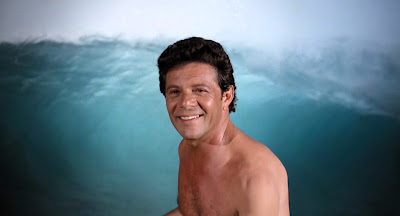 |
| Frankie Avalon as The Big Kahuna |
 |
| Connie Stevens as Connie |
Costing more than all six Beach Party movies combined, Back to the Beach has Annette and Frankie recreating their singin' & surfin' screen alter egos twenty-two years after their final beach blanket kiss fade-out in 1965's How to Stuff a Wild Bikini. Unable to secure the rights to the characters they created in the original films (most often named Frankie & Dolores, aka " Dee Dee"), for Back to the Beach, Funicello goes by Annette, and Avalon's character isn't given a name at all. Billed in the credits as "Annette's Husband," Avalon is only referred to by his surfer glory days nickname, The Big Kahuna. A running gag has no one being able to get it right, calling him everything from The Big Chihuahua to The Big Caboose.
 |
| Demian Slade as Bobby Serving double duty as narrator and audience surrogate, his sarcastic asides give us permission to laugh at Frankie & Annette's outmoded, absurdly wholesome image |
.JPG) |
| Lori Loughlin and Tommy Hinkley as Sandi and Michael |
Now middle-aged and married with two kids, our one-time sun-loving, fun-loving couple have moved far from the beaches of California to suburban Ohio, where they live a life of pink-hued, mid-century modern splendor. But their lives have slipped into a rut. Frankie is a stressed-out used car salesman, Annette self-medicates her middle-class ennui with obsessive shopping (mainly for Skippy Peanut Butter), and their 14-year-old son Bobby (Demian Slade) is going through a rebellious stage (punk, I think) where he dresses like Alan Arkin in Wait Until Dark.
The solution for everybody is a much-needed Hawaiian vacation, but first, a quick detour to California to visit their college-age daughter Sandi (Lori Loughlin, decades before her association with the word “college” got all icky and felonious).
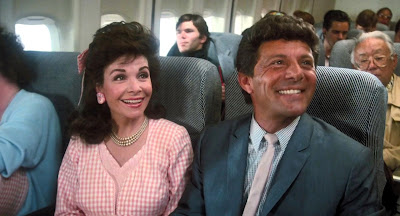 |
| The Friendly Skies |
And so, on the sunny shores of Malibu where it all began, our sand dune sweethearts of the Sixties revisit the past (old flame Connie Stevens); confront the present (their daughter did what Annette and Frankie never dared, shacked up with her fiancé); and conquer old demons (surf-phobic Frankie squares off against the Humunga Cowabunga from Down Under).
And along the way, to the rhythm of surf tunes, pajama parties, and celebrity cameos, love is rekindled, and a happy ending moral emerges: It's never too late to start creating your new "good old days," and when all is said and done, there's absolutely nothing wrong with being corny.
WHAT I LOVE ABOUT THIS MOVIE
As an unofficial Mouseketeer overenamored of '60s music, pop culture, Beach movies, and Annette Funicello, in particular, I would appear to have been the ideal demographic for Back to the Beach. But in truth, upon its release, I was among those who mistakenly thought they knew what to expect (i.e., something along the lines of those absolutely dreadful "nostalgia trot-out" TV-movie reunions for shows like Leave It To Beaver and Father Knows Best), so I avoided Back to the Beach like an oil spill. (My looss. I would have loved seeing this on the big screen.)
 |
| Joe Holland as Zed A contemporary beach baddie to replace Eric Von Zipper (the late, great Harvey Lembeck) |
When I finally got around to seeing Back to the Beach on cable TV, I was overjoyed (and more than a little surprised) to discover how deftly this irresistible little gem of a movie subverted all of my expectations. Against all odds and statistical probabilities, Back to the Beach turned out to be this knowing, shrewdly clever, laugh-out-loud funny, musical parody of the entire Beach Party genre. A zany delight from start to finish, Back to the Beach somehow—without being cynical or superior—struck a tone that balanced affectionate nostalgia and mockingly self-referential humor in a manner that created a kind of comic bridge allowing folks who like Beach Party movies sincerely and those who like them ironically to both have a good time.
It couldn't have been easy spoofing a genre that spent so much of its time spoofing itself (as Back to the Beach's small army of 17 credited screenwriters most certainly attests), but the payoff is that the jokes--all playfully poking fun at the fashions, mores, music, and relentless cheerfulness of the Beach Party movies--are so varied in approach that they lend the film a loony exuberance. A movie ahead of its time, there's culture clash comedy that predates The Brady Bunch Movie (1995) and snarky riff humor of the sort that would make TVs Mystery Science Theater 3000 into such a hit the following year.
 |
| Guitar Legends Dick Dale ("King of the Surf Guitar") and Stevie Ray Vaughn Dick Dale & His Del-Tones appeared in Beach Party and Muscle Beach Party |
PERFORMANCES
It has always been something of a fool's errand trying to figure out where the real Frankie and Annette began and where their images ended. While both stars made token bids at counterculture relevance in 1968 (Funicello in the psychedelic Monkees movie Head, Avalon in Otto Preminger's paean to LSD, Skidoo), by and large, the two always seemed comfortable (or resigned) to forever being linked to their screen personas.
This comfort is evident in the fun they two appear to be having skewering their own images in Back to the Beach. The script declares open season on everything from Frankie's helmet hair to Annette's legendarily ample figure (never in a way mean-spirited or at the cost of making them look ridiculous ), and the pair get into the spirit of the things in a way that reveals them to be good sports and possessors of a hipper sense of humor than they've been given credit for.
It has the cumulative effect of humanizing them, and both stars come off the best they ever have on screen.
 |
| O.J. Simpson's cameo ups Back to the Beach's felon count |
THE STUFF OF FANTASY
Whatever type it is or whatever it's called, the comic sensibility
of Back to the Beach is right up my alley. I love my nostalgia on wry.
(The terrific Demian Slade has most of the best lines.)
Speaking of nostalgia, Back to the Beach is a boomer bonanza of '60s cameos. (Clockwise from top l.) Bob Denver & Alan Hale of Gilligan's Island; Don Adams of Get Smart; Tony Dow, Barbara Billingsley, & Jerry Mathers of Leave it to Beaver; and Edd Byrnes of 77 Sunset Strip.
THE STUFF OF DREAMS
What would a Beach Party movie be without music? In Back to the Beach, I like how the movie is a straight comedy until wound-tighter-than-mainspring Frankie drinks a Stunned Mullet at Daddy-O's and then launches into a rousing rendition of The Rivieras' "California Sun" with Connie Stevens. From then on, fun, colorful musical numbers pop up sporadically (but not nearly enough for my taste) throughout the rest of the film.
 |
| Frankie, Connie, and Annette all had Top Ten record hits during the late '50s and early '60s. |
 |
| Annette updates her 1964 song "Jamaica Ska" with a little help from alt-rock band Fishbone |
 |
| The cast sings "Some Things Live Forever," which failed to make it to the film's soundtrack LP, but became a staple of Frankie & Annette's live concert "Back to the Beach Tour" 1989-1991 |
I blame it on our Culture of Closure, but there is an undeniable fantasy curiosity (among Boomers, especially) about the imagined futures of fictional characters from our pop culture past. Perhaps because these characters represented such wildly idealized visions of American life, gender roles, and traditional (conservative) values, pursuing the "Whatever became of?" is all about being reassured.
If those eternal sweethearts Annette and Frankie finally got married and did indeed live happily ever after, then most certainly, those optimistic fantasies they promoted couldn't have been false. Could they?
A FEW OF MY FAVORITE JOKES
BONUS MATERIAL
Although I didn't see Back to the Beach until it began playing on cable TV, I recall at the time that it was heavily promoted with a soundtrack LP, TV commercials (with voiceover by Wolfman Jack), and ticket giveaways. Plus, as above-the-title stars and co-executive producers, Funicello and Avalon made themselves available for countless interviews and talk show appearances. But as director Lyndall Hobbs relates in the film's Blu-ray featurette, the eventual release of Back to the Beach was a virtual wipeout due to Paramount Studios' dwindling enthusiasm for their product.
Paramount (rightfully so, perhaps) saw Back to the Beach as a movie for the public, not the critics. The studio's eventual release strategy—declaring a media blackout and denying the press advance access to the film—may have succeeded in forestalling any anticipated bad reviews and granted their film an opening weekend driven by fan interest and word-of-mouth, but it also gave the impression that Paramount had given up on, or worse, was somehow embarrassed by, Back to the Beach.
Further evidence of last-minute cold feet on Paramount's part is the fact that in Los Angeles, Back to the Beach was initially set to open on Friday, August 7, 1987, at the high-profile Mann’s Chinese Theater (as per the TWO full-page ads in the Sunday Times)in Hollywood. But opening day saw Mann's Chinese reluctant to relinquish its hold on the Ritchie Valens biopic La Bamba (then in its third week and the unanticipated sleeper hit of the summer) and bumping Back to the Beach to its less-prestigious sister theater, The Hollywood, just up the street.
 |
| Director Lyndall Hobbs |
Lyndall Hobbs’ contributions to making Back to the Beach such a delight are incalculable (it was her idea to turn the script [co-authored by ex-husband Chris Thompson] into a musical), yet despite the film's emerging status as a cult hit, it has remained Hobbs’ sole feature film directing credit.
Annette and Frankie's final feature film appearance together was in the comedy Troop Beverly Hills (1989). It's a visual gag cameo that has the couple jogging outside The Beverly Hills Hotel, Annette breezily running along (in a hot pink tracksuit calling to mind Lisa Kudrow's "Aunt Sassy" in The Comeback) singing her 1959 Top Ten hit "Tall Paul," while a winded and trailing Frankie calls out, "Annette, wait up!"
For proof of what a miraculous feat and balancing act of nostalgia, music, and humor Back to the Beach truly is, one need look no further than the 1978 unsold TV pilot Frankie & Annette: The Second Time Around. Produced by Dick Clark, this labored, excruciatingly sincere 60-minute episode cast Annette as a Vietnam war widow working as a housemother at a girl's college dorm who reunites with her old flame, Frankie, now a failed pop singer. A bid to cash in on the nostalgic goodwill ignited by Avalon's recent stint as Teen Angel in the hit movie Grease (1978), the program is 100% of what those Beach Party movies never were: boring.
Annette and Frankie's final feature film appearance together was in the comedy Troop Beverly Hills (1989). It's a visual gag cameo that has the couple jogging outside The Beverly Hills Hotel, Annette breezily running along (in a hot pink tracksuit calling to mind Lisa Kudrow's "Aunt Sassy" in The Comeback) singing her 1959 Top Ten hit "Tall Paul," while a winded and trailing Frankie calls out, "Annette, wait up!"
The highlighting of Annette's effortless athleticism adds a note of bittersweet charm to this amusing coda to the duo's 26-year onscreen association, for in just three years, Funicello would go public with her MS (multiple sclerosis) diagnosis. The first symptoms of which she began to experience while making Back to the Beach. Annette Funicello passed away in 2013 at the age of 70.
 |
| Annette Funicello was the eternal girl-next-door. She first married at age 22 on Saturday, Jan. 9, 1965. On that day, this comic appeared in newspapers nationwide. |
Sure, maybe Annette & Frankie may have been the corniest couple I'd ever seen.
But they were also one of the most endearing.










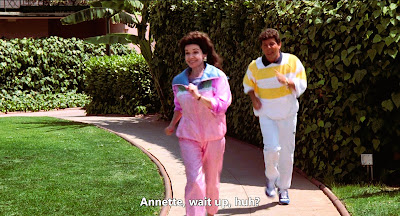
.JPG)





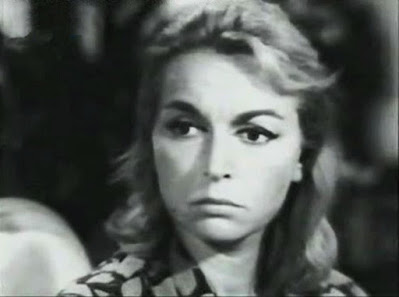
.JPG)




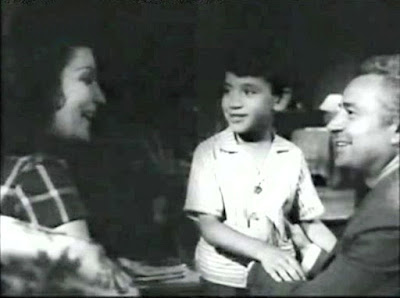
.JPG)



.JPG)




